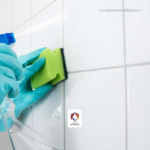Let’s see what humidity is and how to combat it in floors and walls. Since humidity is known as water in a gaseous state, it is also the vapor present in the air. Excess moisture in the home causes surfaces to remain cold, this process can be located on the walls and on the floor or on any surface where water vapor is produced.
There are several types of humidity, one of them is known as condensation humidity. Which manifests itself in some points of the home due to poor ventilation of interior spaces such as: Bathrooms, showers or in the kitchen, poor thermal insulation, defects in construction, improperly installed heating.
A variant is seepage dampness which is caused by rainwater, lack of waterproofing in the building, between the union of overloaded structures or in façade enclosures that have not been properly joined.
Moisture on the floor of the home
This is a phenomenon known as capillary rising damp, it can be observed on upper floors such as living rooms, bedrooms, kitchens or outdoor spaces. When water rises through the floor and passes through the bricks. Then it causes the detachment of the supports, as well as the rupture of the pipe that can also cause these effects due to the pressure exerted by the water.
Obviously this causes wear and tear of the raw construction material which in turn weakens the structure of the home. This puts electricity, furniture, doors, windows and even a large part of the built-in furniture at risk.
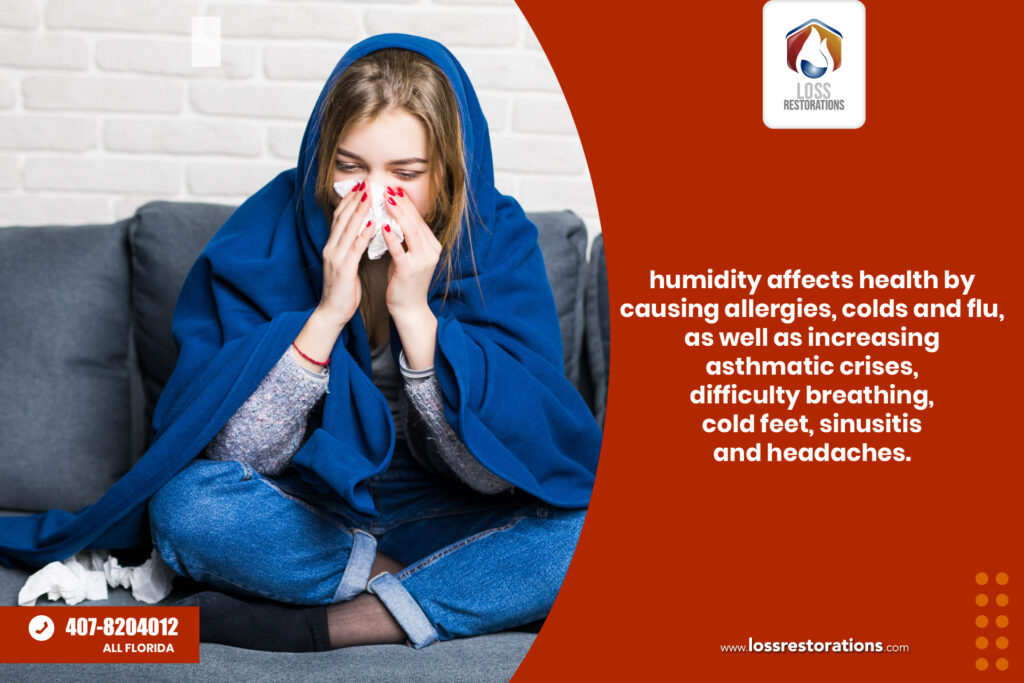
Humidity and its effects on family health
Let us begin by explaining that one of the most visible effects is the poor aesthetic presentation of the house, business, or any place of public assistance, since the spaces where the presence of humidity is noticed are neglected and look very bad.
The air that is breathed is another important aspect although it is not seen, since the dry air hinders the absorption of necessary oxygen. This causes fatigue and exhaustion, accelerating sore throats, headaches and visual weakness.
In short, humidity affects health by causing allergies, colds and flu, as well as increasing asthmatic crises, difficulty breathing, cold feet, sinusitis and headaches. Another aspect related to humidity, fungi and mold, is that the house may feel colder and even cause people to shiver.
Moisture in the home and its signs
Now we will see that the most common signs of moisture and evidence of its presence are: Peeling or bulging wall paint, lifted upholstery, lifted floor tile, rotting wood frames, rust on metal surfaces, the smell of fungus is perceived, flagstone walls begin to deteriorate, and many other annoying signs.
These are some of the most visible signs when moisture is present, but others may also be present.
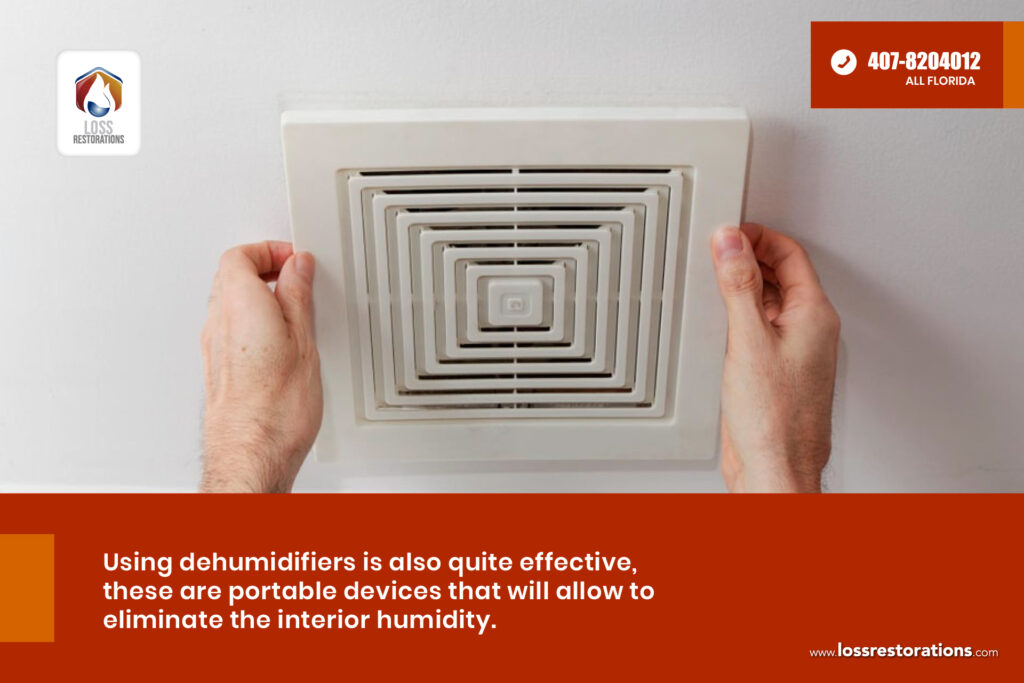
How to combat dampness in floors?
Among some of the evidences that reveal that there is humidity, we can mention the appearance of some puddles, white spots and mildew, these symptoms cause filtrations. To combat this humidity, it is recommended not to open the windows, since the air may be humid and this will affect the indoor environment.
The floors should be cleaned with abundant hot water, since the vaporization favors the humidity. Adding a good splash of alcohol mixed with water so that it can dry immediately is quite effective.
Using dehumidifiers is also quite effective, these are portable devices that will allow to eliminate the interior humidity, with greater effect since they work as air absorbers through an extractor.
These devices will maintain the humidity percentage between 40 and 60%, which are the appropriate ranges of values, and also these devices are programmable and maintain a satisfactory climate and prevent the appearance of molds, stains and fungi.
How to combat moisture in the walls?
To combat moisture in the walls, we can resort to several ways, one of them is to install an exhaust fan in the bathroom, and this is the place where most moisture is generated. This product sucks up to 100m3 of air per hour, then exits through ventilation that converges in the street eliminating most of the steam that has been generated in the bathroom or other rooms of the property where there is presence of moisture.
On the other hand, did you know that warm air is more humid than cold air? It is true, in the winter humidity is less noticeable. Heating is used to keep the house warm at this time of year. This increases the interior temperature and when in contact with cold surfaces these produce condensation, it is suggested to program the temperature with an average between 19 to 20⁰.
Advantages of Combating Moisture
There is always the possibility of moisture occurring in any type of construction. Be it homes, buildings, shopping malls, schools, or any space where people go.
Combating humidity contributes to the prevention of respiratory diseases. It is more likely to suffer from these ailments in the winter, since heating is usually used and this results in drier air. Moisture can even affect your pets.
Eliminating mold and mildew reduces allergies for any member of the family. Having more than 40% humidity will cause people to get sick all the time. The use of a dehumidifier will help you balance the humidity inside the house to enjoy a much more suitable environment in this regard.
Dehumidifiers regulate humidity levels between 40 and 60%, allowing skin and hair to remain well cared for. Likewise, if you have wooden goods, they will be protected against cracking.
Emergencies related to moisture in the walls and floors of your building can be solved by immediately contacting Loss Restorations, which provides its customers with the best quality services and care.
Loss Restorations, is in charge of assessing, foreseeing and repairing the damage caused by water in your home or in any place of public assistance. Likewise, this company has qualified and committed personnel that is in charge of solving the emergencies of the clients in their opportune moment.
If your greatest desire is to enjoy a more comfortable home or office, be sure to hire the best team for your comfort.
Posts Relacionados
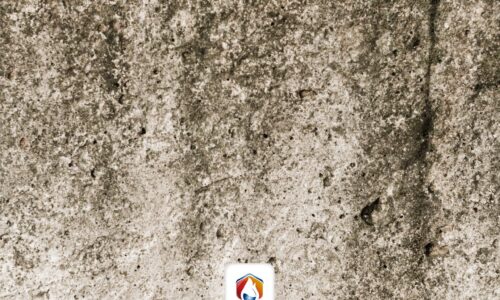
- Carlos
- 2021-08-19
Different Types of Mold and How to Avoid Them
When you discover different types of mold and how to avoid them, you are very close to solving ..
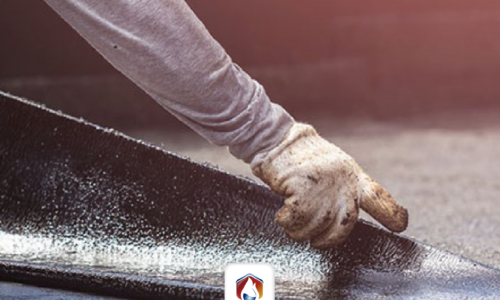
- Carlos
- 2021-05-22
¿Como eliminar las filtraciones en terrazas?
Aprende ¿Cómo eliminar filtraciones en terrazas? Ya que la humedad es un fenómeno natural qu ..

